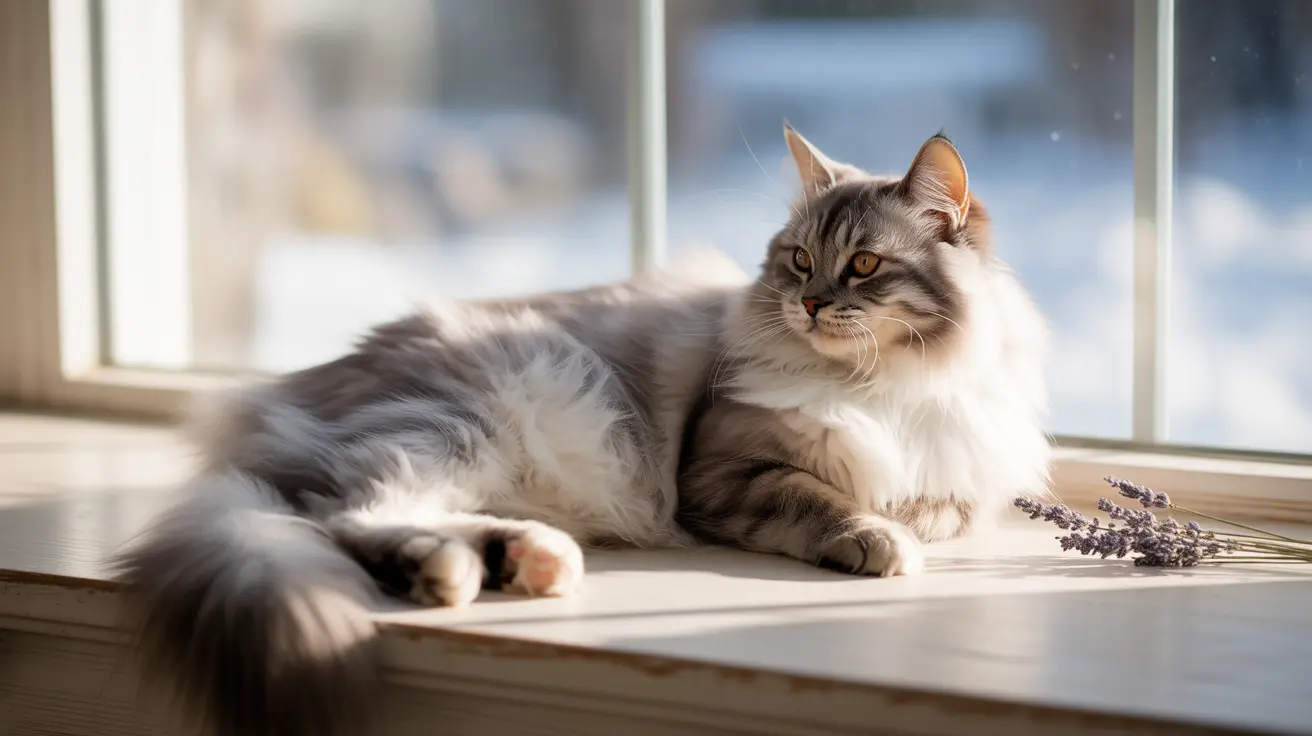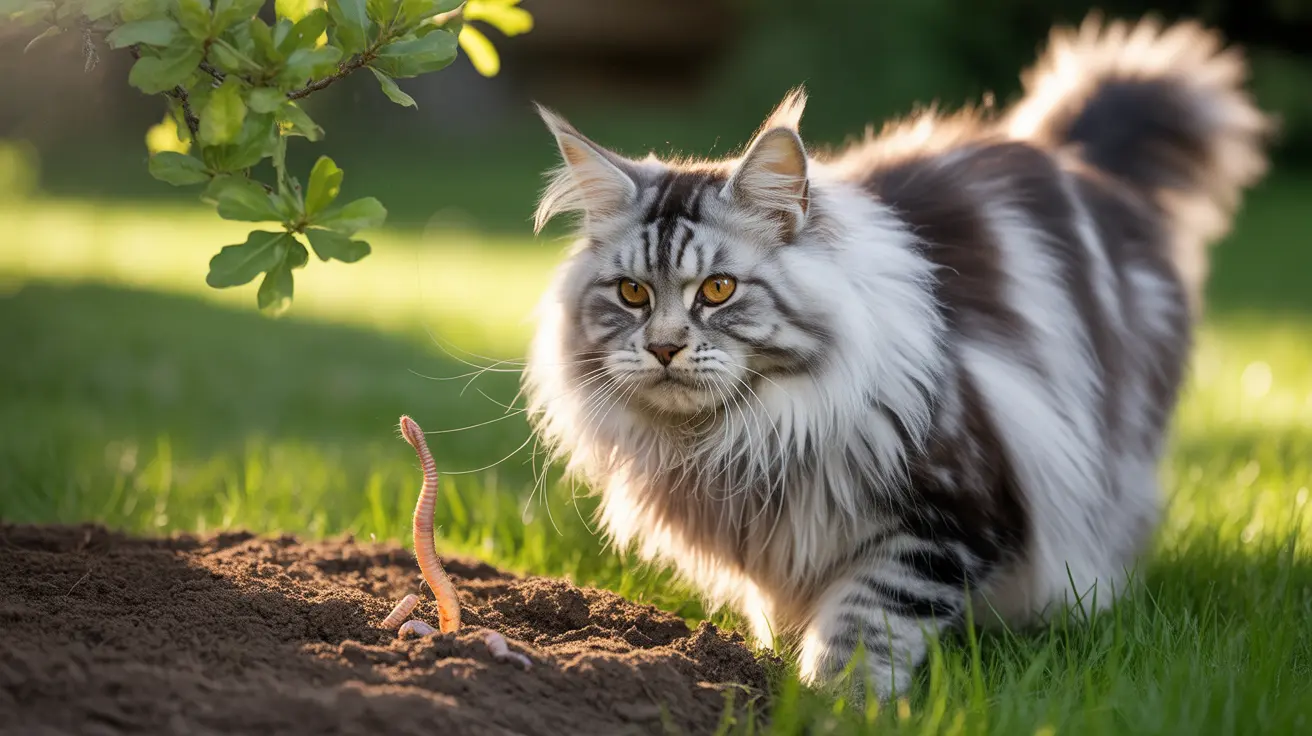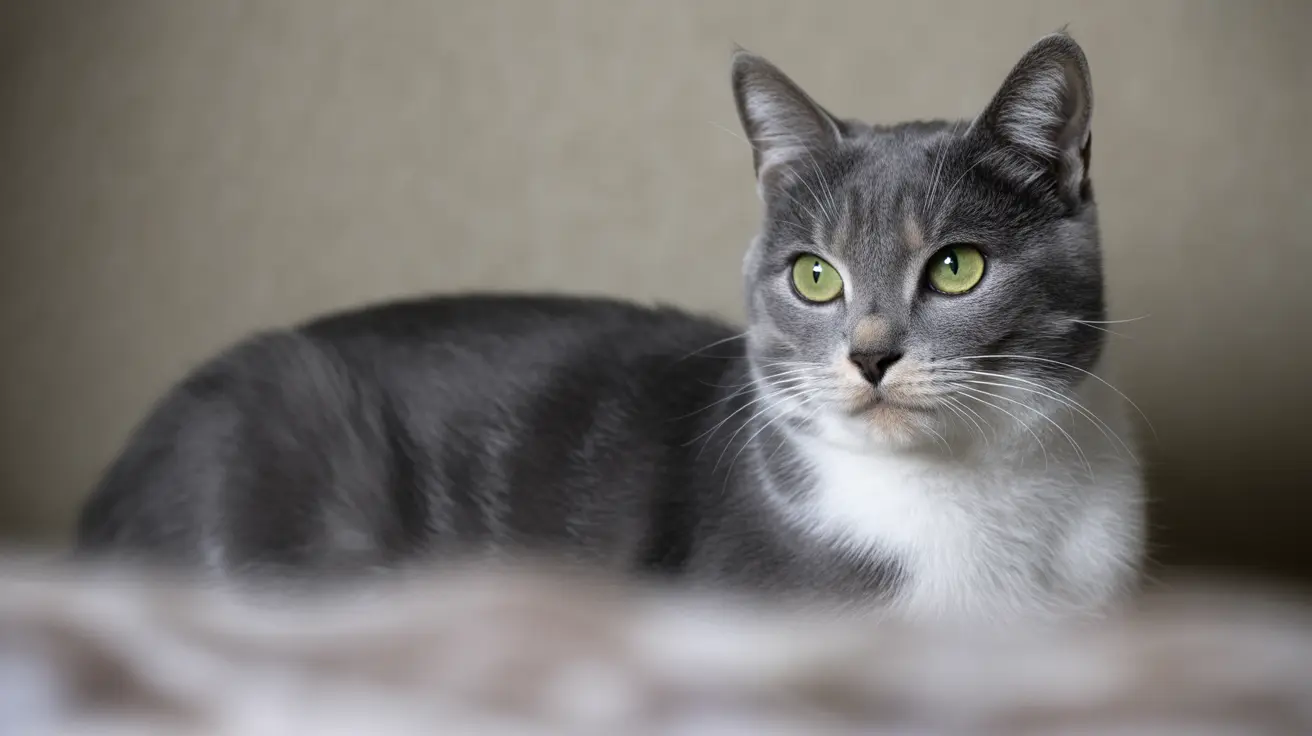Salmiak-Colored Cats Genetic Mutation: The Science Behind Finland's Lucky Cats
In 2007, Finnish cat enthusiasts discovered something extraordinary: cats with a distinctive fur pattern that resembled salmiak, the beloved Nordic salt liquorice candy. These remarkable felines displayed black roots with white tips throughout their coat, complete with black tails ending in white tips, creating a stunning three-dimensional effect that had never been documented before. For over a decade, this unique coloration remained a genetic mystery, captivating researchers and cat lovers alike with its rarity and beauty.
The breakthrough came in 2019 when researchers at the University of Helsinki, led by Heidi Anderson, conducted a comprehensive nationwide study that finally solved the puzzle. Through advanced genetic testing and analysis of 181 cats, they identified a specific recessive mutation near the KIT gene responsible for this extraordinary fur pattern. This discovery not only explained the science behind salmiak-colored cats but also revealed why these felines have earned the endearing nickname "lucky cats" due to their incredibly uncommon appearance.
The Genetics Behind Salmiak Coloration
The salmiak-colored cats genetic mutation represents a fascinating example of how small changes in DNA can produce dramatic visual effects. The mutation involves a deletion of a DNA segment near the KIT gene, which plays a crucial role in determining white hair patterns across many animal species. This genetic alteration follows a recessive inheritance pattern, meaning cats must inherit the mutation from both parents to display the distinctive salmiak appearance.
The KIT gene is fundamental to melanocyte development and migration during embryonic growth. In normal cats, this gene helps determine where white spotting occurs and how extensive it becomes. The salmiak mutation creates a unique disruption in this process, resulting in the characteristic pattern where individual hairs have black roots and white tips, rather than the typical solid coloration or standard white spotting patterns seen in other cats.
Research conducted on 181 cats revealed the extreme rarity of this mutation. Only a handful of cats possessed the genetic variant, either as homozygotes (carrying two copies of the mutation) or heterozygotes (carrying one copy). This scarcity explains why salmiak-colored cats remained undocumented for so long and why they continue to be considered among the most unique feline colorations in the world.
Understanding Cat Coat Color Genetics
To fully appreciate the significance of the salmiak mutation, it's essential to understand the complex genetic mechanisms that control feline coat colors and patterns. Cat fur coloration is determined by the interaction of multiple genes that govern both pigment production and distribution throughout the hair shaft and across the body.
The two primary pigments responsible for cat coat colors are eumelanin and phaeomelanin. Eumelanin produces black and brown coloration, while phaeomelanin creates red and cream tones. The browning gene (B/b/bl) codes for TYRP1, an enzyme involved in eumelanin production, with the dominant B allele producing black eumelanin, while recessive variants create chocolate and cinnamon variations.
The Role of the KIT Gene in White Patterns
The KIT gene family plays a particularly important role in determining white spotting patterns and dominant white coloration in cats. Various alleles at this locus can produce dramatically different effects, from complete white coats to specific white markings. The dominant white allele can cause entirely white coats but is often linked with blue eyes and congenital deafness due to disruption of melanocyte development.
White spotting alleles vary significantly in their expression, creating patterns that range from low coverage (0-50% white) to high coverage (50-100% white). The salmiak mutation represents a unique recessive variant that creates its distinctive pattern through a different mechanism than typical white spotting genes, affecting individual hair pigmentation rather than creating discrete white patches.
The Discovery Process: From Mystery to Science
The journey to understanding salmiak-colored cats genetic mutation showcases the power of modern genetic analysis in solving biological mysteries. When these cats were first identified in 2007, traditional breeding studies and visual analysis couldn't explain their unique appearance. The pattern didn't match any known genetic variants, and the cats' rarity made it difficult to establish breeding lines for study.
The breakthrough required sophisticated DNA sequencing technology and computational analysis to compare the genomes of salmiak cats with normal cats. Researchers systematically examined known color genes, looking for variations that could explain the distinctive pattern. The identification of the KIT gene deletion required precise genetic mapping and confirmation through multiple test subjects.
This scientific approach involved collecting DNA samples from cats across Finland, carefully documenting their coat patterns, and performing comprehensive genetic screens. The methodology demonstrates how modern genetics can reveal the molecular basis of even the rarest biological phenomena, providing insights that were impossible to obtain through traditional observational methods alone.
Comparing Salmiak with Other Unique Cat Patterns
The salmiak mutation stands apart from other known cat coat variations in several important ways. Unlike tortoiseshell patterns, which result from X-chromosome inactivation creating patches of different colors, salmiak coloration affects individual hair shafts uniformly across the body. This creates a more subtle but consistent three-dimensional effect rather than distinct color patches.
Compared to silver series coats caused by the melanin inhibitor gene, which suppresses pigment production more in phaeomelanin than eumelanin, the salmiak pattern specifically affects the distribution of pigment within each hair. Silver cats typically show tipping effects where hair bases are white and tips are colored, but the salmiak pattern reverses this with black roots and white tips.
The salmiak mutation also differs from temperature-sensitive colorpoint patterns seen in Siamese cats, which are caused by mutations in the TYR gene coding for tyrosinase. While colorpoint cats show darker pigmentation on cooler body parts, salmiak cats maintain their distinctive pattern regardless of body temperature or location.
Health Implications and Breeding Considerations
Current research indicates that the salmiak mutation does not appear to pose significant health risks to affected cats. Unlike the dominant white gene, which can be associated with deafness and blue eyes due to melanocyte development issues, the salmiak mutation seems to affect only coat pigmentation without impacting other biological systems.
For breeders interested in preserving this unique trait, understanding the recessive nature of the mutation is crucial. Two cats carrying the salmiak allele have a 25% chance of producing salmiak-colored offspring, while cats with only one copy of the mutation will appear normal but can pass the gene to their kittens. This genetic pattern requires careful planning and genetic testing to maintain breeding lines.
The extreme rarity of the salmiak mutation presents both opportunities and challenges for preservation efforts. While the unique appearance makes these cats highly desirable, the limited genetic pool requires careful management to avoid inbreeding and maintain healthy populations. Collaboration between researchers, breeders, and cat registries will be essential for the long-term preservation of this remarkable genetic variant.
Cultural Significance and Future Research
The discovery of salmiak-colored cats has captured imaginations beyond the scientific community, contributing to Finnish cultural pride and international fascination with unique feline genetics. The connection to salmiak candy creates a charming cultural link that resonates with Nordic traditions, while the cats' rarity has elevated them to almost mythical status among cat enthusiasts worldwide.
Future research directions may explore whether similar mutations exist in other cat populations globally, investigate the precise molecular mechanisms by which the KIT gene deletion creates the salmiak pattern, and examine potential applications of this knowledge to understanding pigmentation in other species. The discovery also highlights the importance of citizen science and local observations in identifying rare genetic variants that might otherwise go unnoticed.
Frequently Asked Questions
- What exactly causes the salmiak pattern in cats?
The salmiak pattern is caused by a recessive genetic mutation involving a deletion near the KIT gene. This mutation affects how pigment is distributed within individual hair shafts, creating hairs with black roots and white tips throughout the coat.
- How rare are salmiak-colored cats?
Salmiak-colored cats are extremely rare. In a comprehensive study of 181 cats, only a few possessed the mutation either homozygously or heterozygously, making them among the rarest cat colorations documented.
- Can salmiak-colored cats be bred intentionally?
Yes, but it requires careful genetic planning. Since the mutation is recessive, both parents must carry the salmiak allele. Two carrier cats have a 25% chance of producing salmiak-colored offspring.
- Are there any health problems associated with salmiak coloration?
Current research suggests that salmiak-colored cats do not experience health issues related to their coat mutation, unlike some other genetic color variants that can be linked to deafness or other conditions.
- Where are salmiak-colored cats found?
These cats were first identified in Finland in 2007, and the genetic research has focused on Finnish cat populations. It's unknown whether the mutation exists in other geographic regions.
- How can I tell if my cat carries the salmiak gene?
Genetic testing is the only reliable way to identify carriers of the salmiak mutation. Cats with one copy of the gene appear normal but can pass the trait to offspring.
- Why are they called "lucky cats"?
The nickname "lucky cats" arose due to their extraordinary rarity and unique appearance. Finding a salmiak-colored cat is considered exceptionally fortunate given how uncommon the mutation is.
Conclusion
The discovery of the salmiak-colored cats genetic mutation represents a remarkable achievement in feline genetics, solving a mystery that puzzled researchers and cat enthusiasts for over a decade. This unique recessive mutation near the KIT gene creates one of the most distinctive coat patterns ever documented, with its characteristic black roots and white tips producing a stunning three-dimensional effect reminiscent of Nordic salt liquorice candy.
As we continue to unravel the complexities of feline genetics, the salmiak mutation serves as a perfect example of how small genetic changes can produce extraordinary visual results. For cat lovers, breeders, and scientists alike, these "lucky cats" remind us that nature still holds surprises waiting to be discovered, and that careful scientific investigation can reveal the elegant genetic mechanisms underlying even the most unusual biological phenomena.






